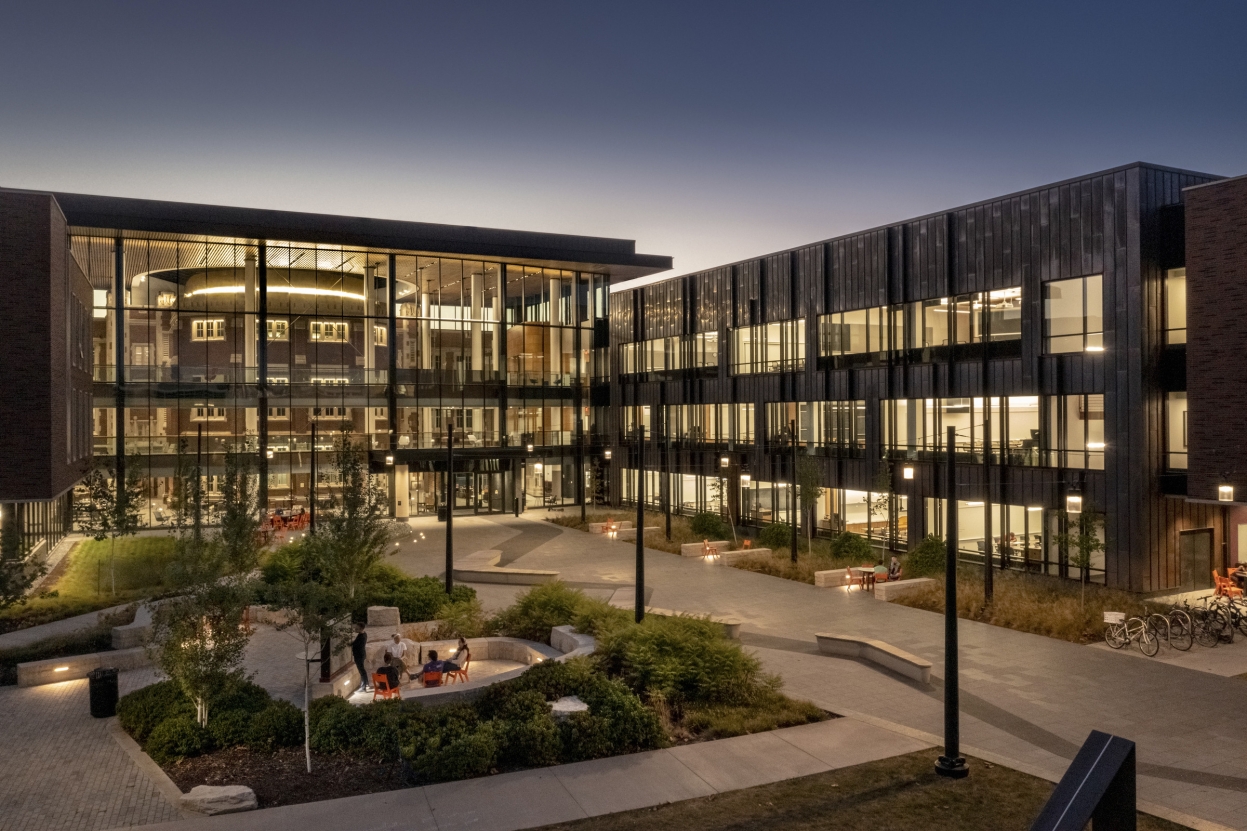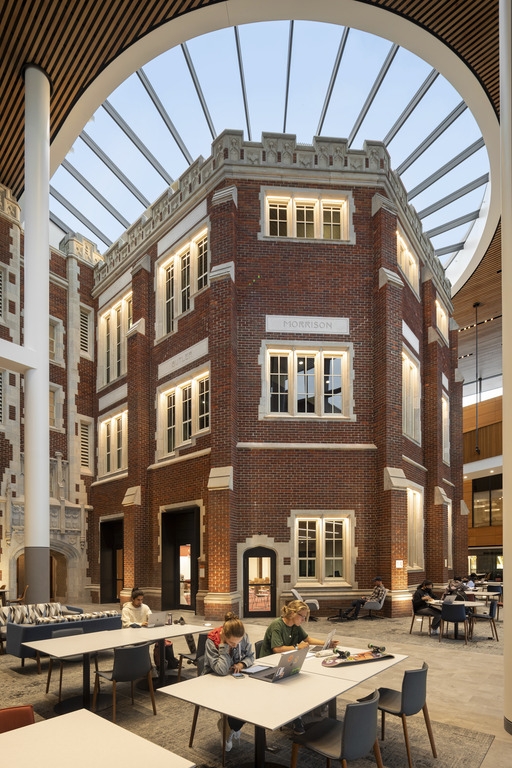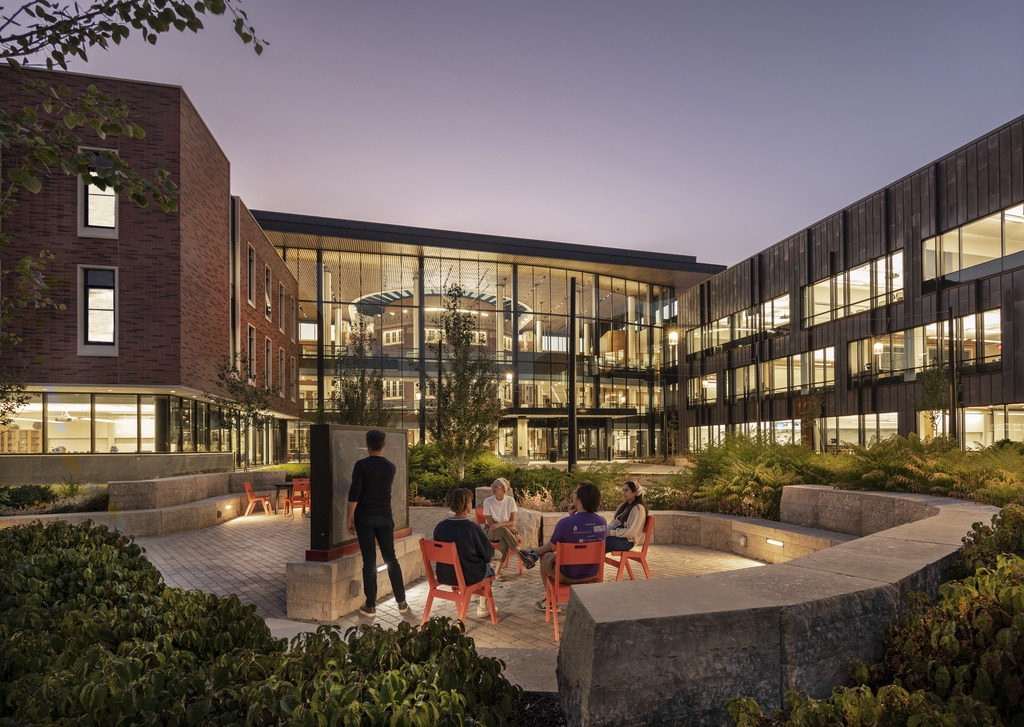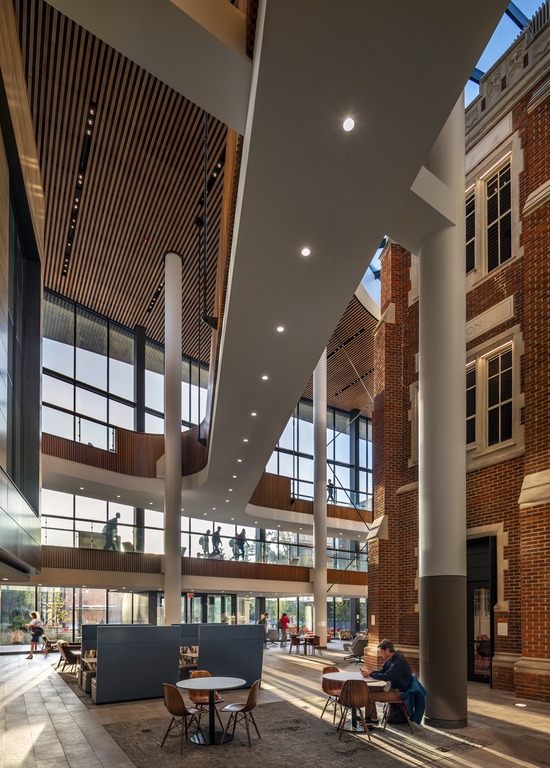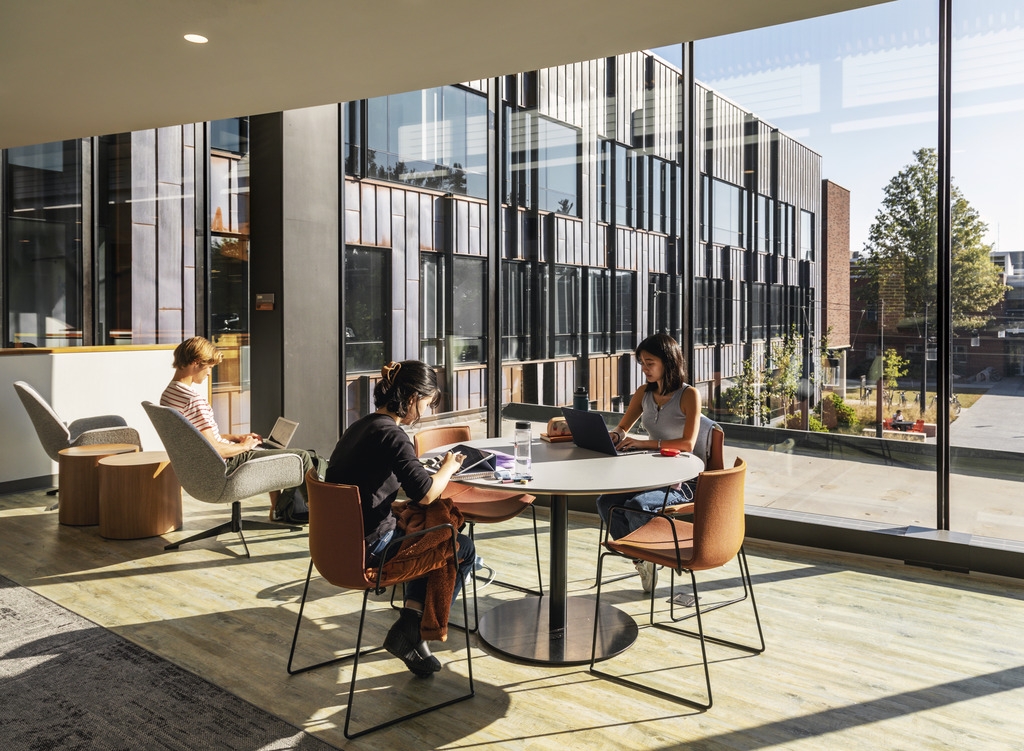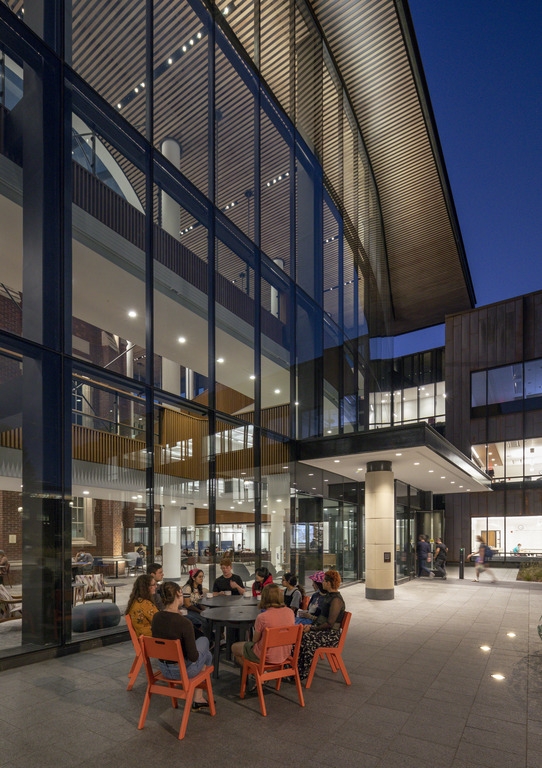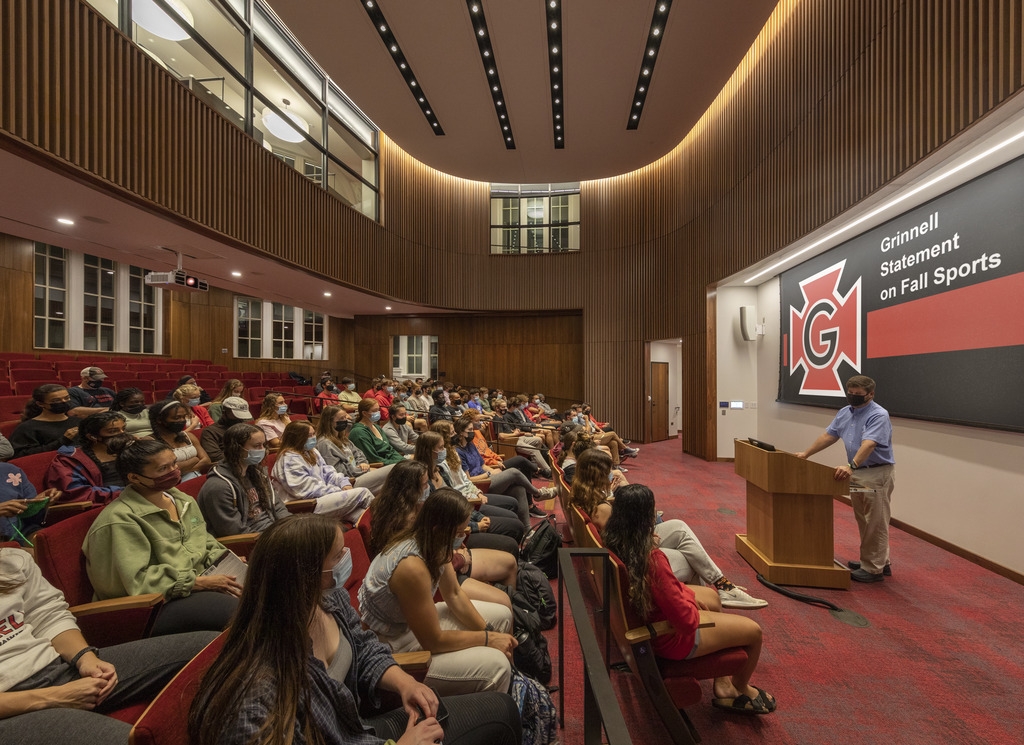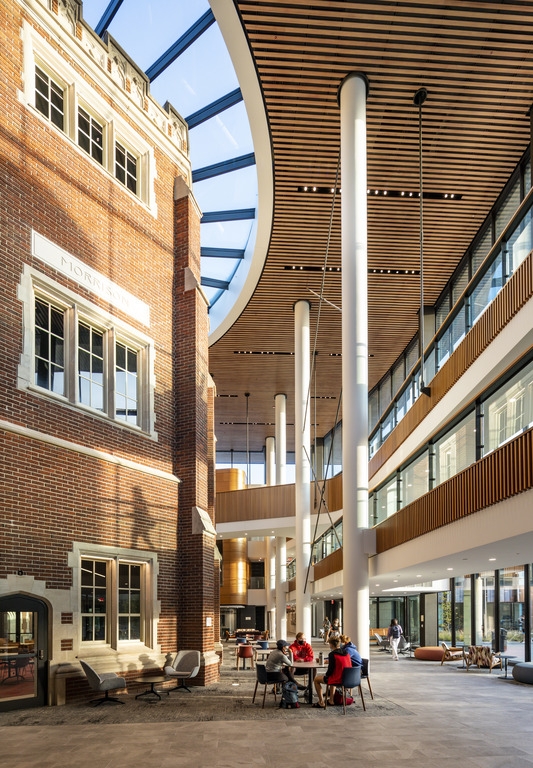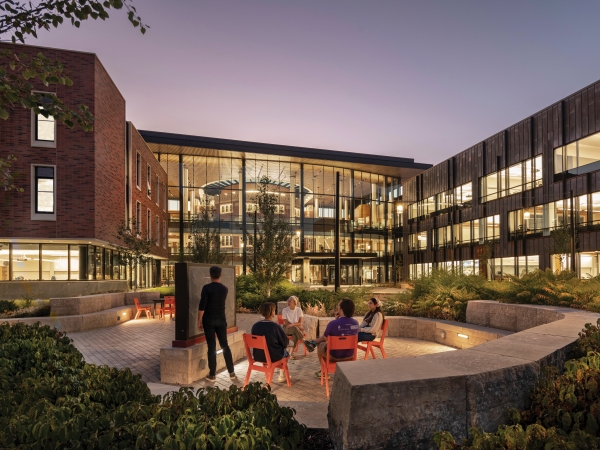What’s possible when you combine 15 humanities departments into one location? Interdisciplinary magic!
At Grinnell College’s Humanities and Social Studies Center (HSSC), economics coexists with political science, and classical languages are taught alongside history and sociology. The heart of all these disciplines is the intersection of four pavilions — two new and two renovated — joined by a three-story atrium with connecting bridges. This new structure embraces Alumni Recitation Hall, creating a central, light-filled courtyard that looks toward the future of liberal arts education while respecting the heritage of one of Grinnell’s most treasured landmarks.
Gone are the days of teachers lecturing and students listening. The HSSC embraces the possibilities of a 21st century learning experience. Students and professors begin the day by walking together along the atrium bridge, enjoying the morning light from the clerestory windows. Class convenes in the historic Alumni Recitation Hall, now fully integrated with modern technology. Students will soon head to the learning laboratories for small group breakouts where they’ll use online tools to work with peers at other institutions. Between classes, they’ll meet up and head to semi-private breakout spaces for project work — fostering the intellectual collisions that enrich a student’s education.
With inclusion in mind, Page partnered with the Institute for Human Centered Design to examine how the team’s approach could go beyond responding to ADA requirements and move toward designing for the broadest possible spectrum of users. The team carefully considered users’ flow through the building to enable equitable experiences, including vertical movement by providing more elevators and locating them close to the main staircases. The design offers sensitive approaches to controlling glare and acoustics and reimagines restrooms to create all-gender spaces.
The HSSC makes possible an inclusive teaching and learning experience attuned to emerging research, technology, and collaboration while honoring Grinnell’s tradition of excellence in education.
Building Facts
- 3-Story Atrium
- 4 Pavilions
- 40 Classrooms
- 77% Energy Use Intensity Savings
- 145 Faculty Offices
- 52,000 GSF Modernization
- 125,000 GSF New Construction
- 177,000 GSF of Education Excellence
Explore the Center in 360°
The classrooms look like a perfect learning environment with plenty of natural light. I am very excited to have class here and to spend lots of time exploring and finding new study nooks.
Kaylin Kuhn
